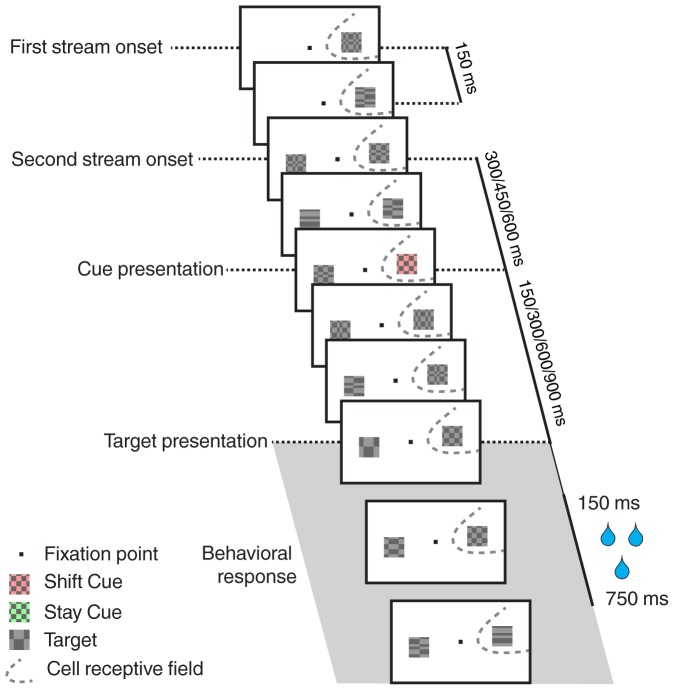Figure 1. Task description.
The experimental procedure is a cued-target detection based on a dual rapid serial visual presentation (RSVP) paradigm. The monkey is required to maintain its gaze on the central fixation point all throughout the trial. A first stream of stimuli, that is a succession of visual stimuli every 150 ms, is presented either within (as here) or opposite the fixation point from the cell's receptive field. Three hundred milliseconds later, a second stream appears opposite the first stream from the fixation point. Three hundred, 450 or 600 ms (here, 300 ms) following the second stream onset, a cue is presented within the first stream. This cue can be a green stay cue indicating to the monkey that the target has a high probability to appear within this very same stream or a red shift cue (as here), indicating that the target has a high probability to appear within the opposite stream. On 80% of the trials, the target is presented 150, 300, 600 or 900 ms from cue onset. On 80% of these target trials (64% of all trials), the target location is correctly predicted by the cue (valid target, as here). On 20% of these target trials (16% of all trials), the target location is incorrectly predicted by the cue (invalid target). On the remaining 20% of trials, no target is presented (catch trials), so as to discourage false alarms. The target is composed of just one horizontal and one vertical spatial cycle, while distractor items are composed of up to 6 horizontal and vertical spatial cycles. The monkey gets rewarded for responding by a bar release, between 150 and 750 ms following target presentation, and for holding on to the bar when no target is presented.

